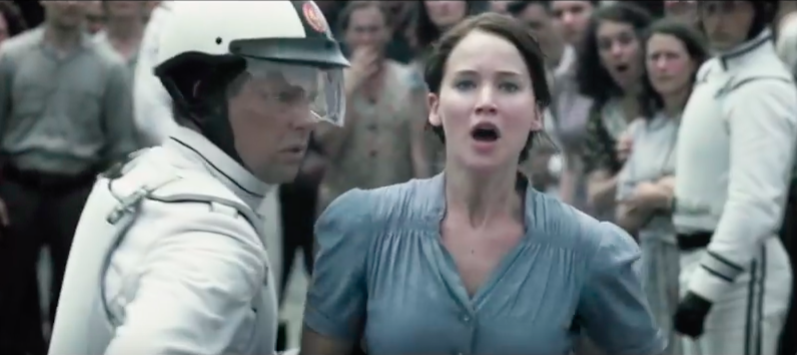Image by pasja1000 on Pixabay
Over the past century, young adult fiction has gone through its phases and fads, but a major trope of the genre has largely remained the same, from the earliest superheroes to this year’s bestsellers: the classic protagonist of young adult (YA) literature is a young person, underestimated by those around them, who finds subversive ways to exercise their moral agency in the face of seemingly impossible constraints. The rise of these bold young protagonists in the first half of the 20th century coincided with cultural shifts that gradually began to distance and “other” young people from the adult world: child labor laws were passed, high school attendance became compulsory, and the modern conceptions of the “teenager” and “youth culture” were born. For the first time, young people were a niche market of their own to which YA literature could be sold, and the themes of that literature reflected the longings of young people to do something important, to make a difference, to be taken seriously.
As the concept of adolescence has taken root in the American imagination, young people have increasingly been pushed out of the adult world, kept from making important decisions or contributing to society in a meaningful way; they cannot work, they cannot vote, they cannot even be out after curfew. As historian Thomas Hine writes, it is the plight of young people today that they must “serve a sentence of presumed immaturity, regardless of their achievements of abilities.”1 Although many of the “founding fathers” who signed the Declaration of Independence were twenty-somethings or even teenagers, today the only social roles allotted for the American teenager are those of the student and the consumer. So it’s not hard to understand why young people resonate with the themes of YA literature or why they live vicariously through protagonists who subvert adult expectations and challenge the status quo.
The role of the young person as a consumer complicates the notion of youth looking to protagonists of YA literature, developed and marketed to them by adults, as models of moral agency. By purchasing and consuming young adult literature, young people are quite literally buying into the same youth culture that constrains them. The genre seems exploitative, as though the system capitalizes on adolescents’ desire for autonomy, while still withholding the opportunities for them to realize that desire. And yet consumers are not entirely passive; they use their purchase power to create the demand for certain types of literature and to make their voice heard: these are the stories which resonate with us. These are the protagonists who inspire us.
Young people’s choice of books and engagement in reading, then, is itself a form of moral agency. Yet engaged, participatory reading of these novels also forms moral agency in young people. As adolescents imaginatively identify with strong protagonists, they can begin to embody the ethics of characters they admire, drawing on the characters’ moral agency as a model for their own. Thus, although young adult fiction provides a temporary escape from the constraints of the real world by allowing young people to live vicariously through the protagonists, it also instills in young people the values of those protagonists and opens up new modes of action which shape their ways of asserting their moral agency in a world that denies it. The characters in these novels embody creative alternatives to dominant ethical models that assume freedom, and their choices help young people to imagine new possibilities for being and acting in the world.
A popular subgenre of young adult fiction is the dystopian novel, which has garnered rapid popularity over the past decade or so and includes series such as Suzanne Collins’s The Hunger Games, Veronica Roth’s Divergent, and Scott Westerfeld’s Uglies. Dystopian novels are a darker take on fantasy worlds that depict utopias-gone-wrong. Oftentimes, this includes a powerful regime that demands conformity to its “perfect” structure, silencing or ignoring those who dissent or do not fit the mold. By engaging serious issues, from environmentalism to state-sanctioned violence to the dehumanization and commodification of people, dystopia can serve to “make readers more aware of the ways they are limited by social structures and to encourage their development regardless of such limitations.”2
This post will explore the model of moral agency under constraint embodied by Katniss Everdeen, the heroine of Suzanne Collins’ The Hunger Games trilogy. Forced by the Capitol regime to be a pawn in an annual fight to the death with 11 other young people (“tributes”), Katniss remains true to herself and her values – and in so doing, manages to challenge the entire system that has constrained her. The decisions that Katniss makes in the Hunger Games are particularly interesting from an ethical perspective. Some scholars have criticized her as reactive or even utterly passive, rather than agential,3 but this understanding of Katniss is based on assumptions about moral agency that assume a certain level of freedom and choice. Instead, Katniss’s agency is best understood from the perspective of feminist care ethics.4 Care ethics push back against the male-dominated understanding of moral agency as objective, universal, justice-oriented principles, and lifts up instead a form of moral agency that arises out of compassion and relationship. Throughout the series, Katniss is motivated by the values of love, loyalty, and human dignity, and her actions are always in the service of relationship. Yet Collins turns stereotypes of “feminine” care on their head by demonstrating that an ethic of care is the only form of moral agency powerful enough – and tough enough5 – not only to win the Hunger Games, but to challenge the Capitol and spark a rebellion.
The pictures below represent three iconic scenes from the first Hunger Games film, in which Katniss embodies an ethic of care.
Volunteering as Tribute

At the very beginning, on the day of the Reaping when two tributes are selected from each district, Katniss’s little sister Prim is selected. Without hesitation, Katniss volunteers in her place with the now-iconic words: “I volunteer as tribute!” In the novel, through Katniss’s first-person narration, we as readers are privy to the moment she made her decision. It was not after a careful weighing of pros and cons, or even rationally thinking about why she would volunteer. Instead, it was an emotionally charged response to a sensory experience. Before the Reaping, Katniss had tucked in Prim’s blouse for her, affectionately referring to her as “Little Duck.” Now, as Prim slowly begins to mount the stairs, Katniss recalls, “I see the back of her blouse has become untucked and hangs out over her skirt. It’s this detail, the untucked blouse forming a ducktail, that brings me back to myself.”7 This very personal image is fraught with emotional power; to Katniss, it signifies Prim’s youth, innocence, and vulnerability. Rational? Disinterested? Hardly. Some say Katniss’s emotional investment means that this cannot be an act of moral agency. But feminist care ethics say that yes, unequivocally, it can. After all, an ethic of care is fundamentally based in relationship and emotional connection.
Funeral Rites

Second, Katniss embodies an ethic of care in the arena by caring for the body of her little friend Rue after she has been killed. After singing a lullaby to Rue as she dies, Katniss gathers wildflowers to adorn her body. The scene is full of tender, tactile care language: “I lean forward and press my lips against her temple. Slowly, as if not to wake her, I lay her head back on the ground and release her hand….One stem at a time, I decorate her body in the flowers. Covering the ugly wound. Wreathing her face. Weaving her hair with bright colors.”8 In a scene like this, it would seem profane to speak of duty, yet it would seem hollow to contend that this action has no moral value. It is care, through and through. It is love. And unlike before, it is too late to save the life of the one she loves. The only thing she can do now is to restore Rue’s humanity and dignity by honoring her with flowers, rebelling against the Capitol’s objectification and commodification of her body. Ultimately, this nurturing act ends up becoming “one of Katniss’s most significant acts of defiance against the Capitol.”9
When You’d Rather Die Than Play By Their Rules

The final example comes at the very end, after the other tributes have been killed, and Katniss and Peeta are alone in the arena. Having been told that only one victor can leave the arena alive, Katniss and Peeta decide to eat poisonous berries and die together, rather than to kill the other. Katniss’s action is not selfless or duty-bound; in part, she does it because she cannot imagine living without Peeta. Given the choice between killing and being killed, Katniss reflects, “I know death right here, right now would be the easier of the two.”10 Thus, this is a decision in which she is emotionally invested. Yet it is still an exertion of moral agency, because it arises from her deeply-held moral values of love and care. And because her action reflects values which are antithetical to those of the Capitol, she will have succeeded in challenging the Capitol’s values whether she sparks a rebellion or not. As Peeta had expressed before the Games began, she has shown herself to be “more than just a piece in their Games.”11 Even if she and Peeta die, they will have taken control over how they died – with dignity and humanity, rather than as the “monsters” Peeta feared they might become.12 Even in the face of death – the ultimate constraint – Katniss still owns her humanity, because she cares.
In all of these actions, Katniss acts from within her moral framework as well as she can in a given situation, in which there are no objectively “right” options. In each of them, her actions are governed by an ethic of care; she subjectively makes decisions based on relationship and emotional affect, recognizing the personhood of the other even as her own is denied. This makes her a powerful model of moral agency for all who are constrained or whose personhood is denied; it shows them that care, far from being weak or passive, is the only force strong enough to challenge the system
The popularity of the Hunger Games series says something about the type of hero Gen Z admires, and the model of moral agency they find compelling. Perhaps compassion in its particularity is a more relatable impetus for action than objective, universal Kantian principles – especially when one’s choices are limited or constrained. Katniss’s actions demonstrate to young people, who feel they have no voice, that small, concrete actions of care can be powerful assertions of moral agency – and that they can become part of a larger framework of resistance. By caring for one another, by refusing to silence others the way they have been silenced, young people can be a powerful corrective to the system that denies their moral agency. Katniss offers hope to young people that they can expose, challenge, and change the systems which constrain them. As a symbol of subversive resistance, she is more than Panem’s Mockingjay; she becomes the Mockingjay for all young people who look to her as a powerful model of moral agency under constraint.
Want to know more about this author? Click here!
Footnotes
- Thomas Hine, The Rise and Fall of the American Teenager (New York: HarperCollins, 1999), 16.
- Miranda A. Green-Barteet, “’I’m beginning to know who I am’: The Rebellious Subjectivities of Katniss Everdeen and Tris Prior,” Female Rebellion in Young Adult Dystopian Fiction, ed. Sara K. Day, Miranda A. Green-Barteet, and Amy L. Montz (Burlington: Ashgate, 2014), 34.
- See Amanda Firestone, “Apples to Oranges: The Heroines in Twilight and The Hunger Games,” Of Bread, Blood, and the Hunger Games: Critical Essays on the Suzanne Collins Trilogy, ed. Mary F. Pharr and Leisa A. Clark (Jefferson, NC: McFarland & Company, 2012); Katherine R. Broad, “The Dandelion in the Spring: Utopia as Romance in Suzanne Collins’s The Hunger Games Trilogy,” Contemporary Dystopian Fiction for Young Adults: Brave New Teenagers (New York: Routledge, 2013); Laura Miller, “The Hunger Games vs. Twilight: Which Young Adult Crossover Hit Series Has the Most Empowered Heroine? You’d Be Surprised,” https://www.salon.com/2010/09/05/hunger_games_twilight/.
- See Lindsey Issow Averill, “Sometimes the World is Hungry for People Who Care: Katniss and the Feminist Care Ethic,” The Hunger Games and Philosophy: A Critique of Pure Treason (Hoboken, NJ: John Wiley & Sons, 2012): 162-177.
- As Nel Noddings asserts, “An ethic of caring is a tough ethic.” See Nel Noddings, “Caring,” Justice and Care: Essential Readings in Feminist Ethics, ed. Virginia Held (Boulder: Westview Press, 1995), 26.
- Fandango Movie Clips, “The Hunger Games #1 Movie Clip – Volunteer as Tribute, August 24, 2012, Video 46 sec., https://www.youtube.com/watch?v=iTyyKROkC3E&t=46s.
- Suzanne Collins, The Hunger Games (New York: Scholastic, 2008), 21-22.
- Suzanne Collins, The Hunger Games (New York: Scholastic, 2008), 235-237.
- Sonya Sawyer Fritz, “Girl Power and Girl Activism in the Fiction of Suzanne Collins, Scott Westerfeld, and Moira Young,” Female Rebellion in Young Adult Dystopian Fiction, ed. Sara K. Day, Miranda A. Green-Barteet, and Amy L. Montz (Burlington: Ashgate, 2014), 28.
- Collins, The Hunger Games, 343.
- Collins, The Hunger Games, 142
- Collins, The Hunger Games, 141.
